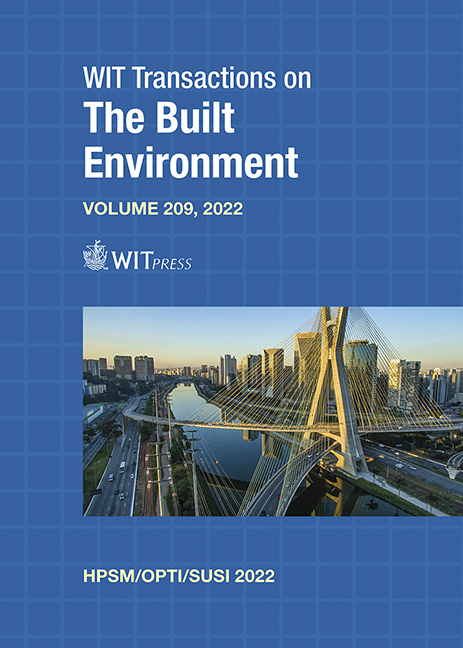STRUCTURAL TOPOLOGY OPTIMIZATION WITH HIGH SPATIAL DEFINITION BY USING THE OVERWEIGHT APPROACH
Price
Free (open access)
Transaction
Volume
209
Pages
12
Page Range
71 - 82
Published
2022
Paper DOI
10.2495/HPSU220071
Copyright
Author(s)
DIEGO VILLALBA, JOSÉ PARÍS, IVÁN COUCEIRO, FERMÍN NAVARRINA
Abstract
The first formulation of topology optimization was proposed in the 1980s. Since then, many contributions have been presented with the purpose of improving its efficiency and expanding its field of application. The aim of this research is to develop a structural topology optimization algorithm considering minimum weight and stress constraints. Structural topology optimization with stress constraints has been previously formulated with several different approaches, mainly: local stress constraints, global stress constraints or block aggregation of stress constraints. In this research the overweight approach, an improvement of the so-called damage approach, is used. In this method, a virtual relative density (VRD) is defined as a function of the violation of the local stress constraints. VRD is increased as the stresses exceed the maximum allowable value, with the exception of the areas with the minimum value of the relative density, since full-void solutions are intended. The distribution of the material in the domain is modelled using two different approaches: a uniform relative density within each element of the mesh and a relative density defined by means of quadratic B-splines. For this reason, the structural analysis is performed by means of the finite element method (FEM) and the isogeometric analysis (IGA) respectively. The optimization is addressed by means of the sequential linear programming algorithm (SLP), which is driven by the information provided by a full first order sensitivity analysis extension of both FEM and IGA formulations. Finally, the overweight approach is tested by means of some two dimensional problems. The domain has been divided in an elevated number of elements to attain high spatial definition solutions. The results show that the overweight approach is a feasible alternative for the damage approach and the stress constraints aggregation techniques to solve the topology optimization problem. A comparison between both formulations of the material distribution is included.
Keywords
topology optimization, structures, stress constraint, overweight approach, finite element method, isogeometric analysis, aggregation techniques, high spatial definition





